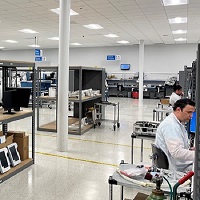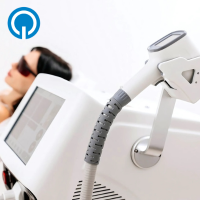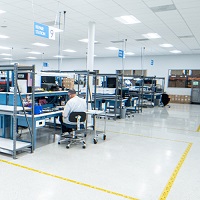
Windows 7 is Over: Are You Ready for an Upgrade?
Since January 14th, 2020, Microsoft no longer provides updates for Windows 7.
In a statement from Microsoft, they explained how Windows 7 would receive up to 10 years of product support since its inception in 2009. Although now, 10 years later, they are discontinuing the product and focusing on investments that support newer technologies.
“Technical assistance and software updates from Windows Update that help protect your PC are no longer available for the product. Microsoft strongly recommends that you move to Windows 10 to avoid a situation where you need service or support that is no longer available.”
Easier said than done, right?
Especially for medical device manufacturers that rely on Windows 7 on a daily basis, making the switch to a new OS creates a tremendous amount of stress and extra costs that many companies aren’t prepared to handle. Nonetheless, change is inevitable when it comes to software development and data, and rather than searching for ways to maintain legacy systems, adopting a proactive mindset for future growth is the best path for success.
Moving forward, Windows 7 is over—are you ready for an upgrade? Here are a few things to consider:
Maintaining Windows 7 Leaves You Vulnerable to Security Threats
With Microsoft dropping Windows 7 support, data security for medical device manufacturers and life science companies have a myriad of challenges to face.
Primarily, instruments (i.e. medical and industrial devices (connected to applications on a PC, and those running on Windows 7, face support issues that create a higher level of vulnerability. For instance, Windows 7 no longer receives patches and updates for new security problems and viruses. As a result, malicious attacks can target large batches of Windows 7 users and wreak havoc on their operations.
From a quality and regulatory standpoint, medical device manufacturers are bound to various restrictions that prevent them from making a smooth transition to a new OS and procedures.
Within the healthcare market, Windows upgrades have been slow to impact this space. The main reason for this is due to specific applications and life-saving technologies operating on older software that is still being used today. A great example of this comes with CT scanners that still run on Windows XP.
According to Wendy Nather—Head of Advisory Chief Information Officers at Duo—she claims that “Windows XP was a very sturdy and resilient operating system and applications operating on CT scanners are not built to rapidly adapt to new operating systems. You expect to hold on to the CT scanner for many years and it costs millions of dollars to buy.” Right away, it’s that same understanding that’s held healthcare organizations back from making necessary changes.
This issue translates over to the enterprise side, as well. In fact, a recent report from Duo shows that the healthcare sectors in both Europe and North America are the most inundated with Windows Server 2012 R2 Operating Systems being End of Service, requiring a massive undertaking to refresh both the Operating System and underlying applications which require testing and validation to operate in the new environments. Altogether, it’s estimated that more than half of all endpoints in the industry are running on outdated Windows platforms. With that in mind, applications in healthcare for imaging are at risk, and lab samples going through workflow automation platforms are more susceptible to inconsistencies and disruptions.
The old adage of “if it ain’t broke, don’t fix it” must be left behind to ensure that the right protections are in place to provide patients with the best possible care. Luckily, healthcare organizations have options to keep themselves up-to-date.
Most companies that get breached aren’t aware until it’s too late. The median time to discover a breach is typically measured in months. When a breach does occur, most organizations are reluctant to inform customers or law enforcement. Well-prepared companies have a breach response plan outlined and tested. Ensure your organization is prepared and partner with Quest to develop a data protection plan.
What Healthcare Organizations Can Do to Protect Themselves
Primarily, an important step to take to avoid complications with an outdated OS is to back up the data information and applications residing on these systems.
Work with your IT team to put a backup and restoration plan in place to maintain your data and application configurations so that they are not inadvertently affected during the upgrade process. However, once you have everything saved, eventually, you’ll have to decide on what upgrade path and patch level to pursue to complete your organization’s migration efforts. Since Windows 7 and Windows 2012 R2 server are Microsoft products, the recommended next step is to upgrade your infrastructure to Windows 10, Windows 2016 Server or the latest released version based on your hardware.
Perhaps, the only downside to a Windows upgrade is the issue of equipment specifications that your legacy computers and equipment may not be able to handle. If that’s the case, investing in either hardware upgrades or new infrastructure may need to be considered but which may take a toll on an organization’s budget. On the other hand, the only solution to maintaining Windows 7 is to pay additional fees for extended security updates from Microsoft, however, this option also carries a cost, and is only delaying the inevitable.
Ideally, the answer lies in taking the time to make gradual changes to your departure from legacy Windows environments. Rallying for upgrades all at once only leaves room for errors and inefficiencies, but doing things on your own can also feel like an uphill battle.
To help lighten the load, you can also seek support from an OEM that understands the challenges of legacy systems and provides a remediation plan to get your organization back on track.
Quest International Supports the Life Cycle of Your IT Systems
Rather than carrying the load yourself, an OEM service provider like Quest International can help you gain a better understanding of how to maintain your IT infrastructures moving forward.
With a full suite of IT services that assist with lifecycle management and logistics on a global scale, you gain valuable expertise with supporting your IT assets. More than anything, you are partnering with a provider that helps you manage the total-cost-of-ownership of your organization’s install base, which in turn helps prepare you against any other obstacles you may come across in the future, small or large.
Microsoft ending the lifecycle of Windows 7 doesn’t make your job any easier, but remember that you have viable options to continue building success.
To learn more about Quest International and how it can assist with your Windows upgrades, contact us.












